Psychological horror movies have the power to reach into the darkest recess of your mind. Unlike slasher movies, which rely on jump scares, and physical gore, this subgenre employs a more subtle approach. Slow narratives full of suspense, paranoia, and dread are left behind long after the credits role. In this article, I dive into the chilling psychological horror landscape, curating a list of the most iconic masterpieces of all time.
What Is a Psychological Horror Movie?
Psychological horror is a horror subgenre committed to playing tricks on the mind. These movies use slow narratives to provoke our minds, whether that’s inducing anxiety, paranoia, or simply leaving us terrified. This approach is different from other horror subgenres. These often feature over-the-top violence.
Films in this subgenre can be categorized by their nuanced approach to fear. Often, they use unreliable narration and ambiguity to make audiences question their understanding of the film or life.
What Makes Psychological Horror Scary?
Psychological horror movies weaponize the audience’s mind and use their own fears against them. Viewers have different reactions to these movies because fear is subjective. However, the best psychological horror movies explore shared fears like isolation, fear of the unknown, and the fear of our own minds.
Tension and suspense are built up through a variety of techniques, including:
- Pacing. Unfolding the story slowly creates a sense of dread and anticipation.
- Sound design. Dissonant music and eerie soundscapes make for an unsettling atmosphere.
- Metaphors and symbolism. Symbolic imagery helps point us in the right direction but keeps us guessing just enough.
- Unreliable narration. Protagonists can’t always be relied on – nothing is ever as it seems.
Using these techniques, films in this subgenre play on fear, anxiety, unease, and paranoia. When we know something terrible is going to happen, it keeps us glued to the screen. At the same time, we’re sat there trying to work out what’s going to happen and who to trust.
50 Best Psychological Horror Movies You Must Watch
Psycho (1960)
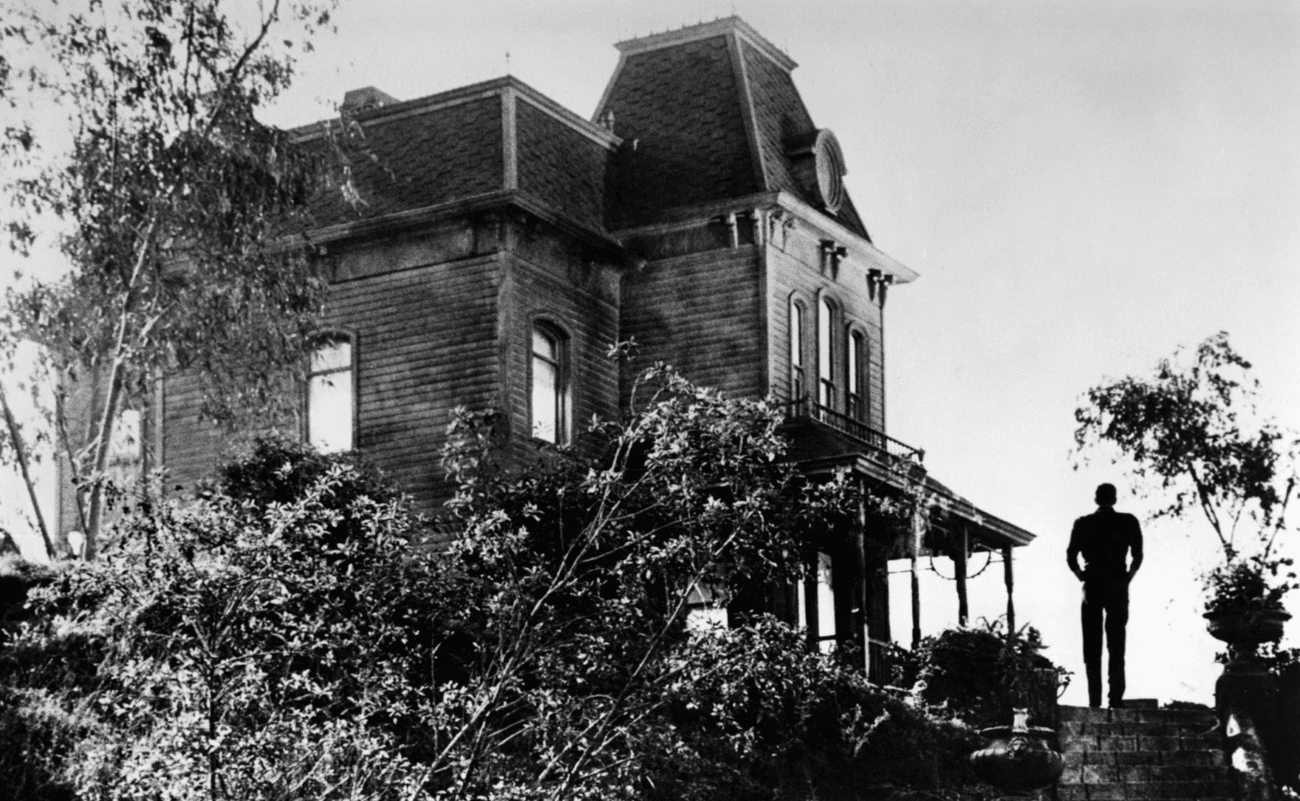
Alfred Hitchcock’s Psycho will show up in every list of the best psychological horror movies, and it is with good reason. As one of the most influential psychological horror titles, this film has captivated audiences for decades with its chilling exploration of mental stability and human darkness.
Marion Crane finds herself seeking refuge at Bates Motel, run by Norman Bates. As the night unfolds, her presence triggers a series of horrific events that expose Norman’s twisted mind. There’s a lot of symbolic imagery that represents Norman’s repressed desires and broken psyche.
Psycho is still one of the go-to horror movies. I can’t get enough of Norman Bates. I’ve even watched the Bates Motel TV series a couple of times.
Rating – 10/10
The Shining (1980)
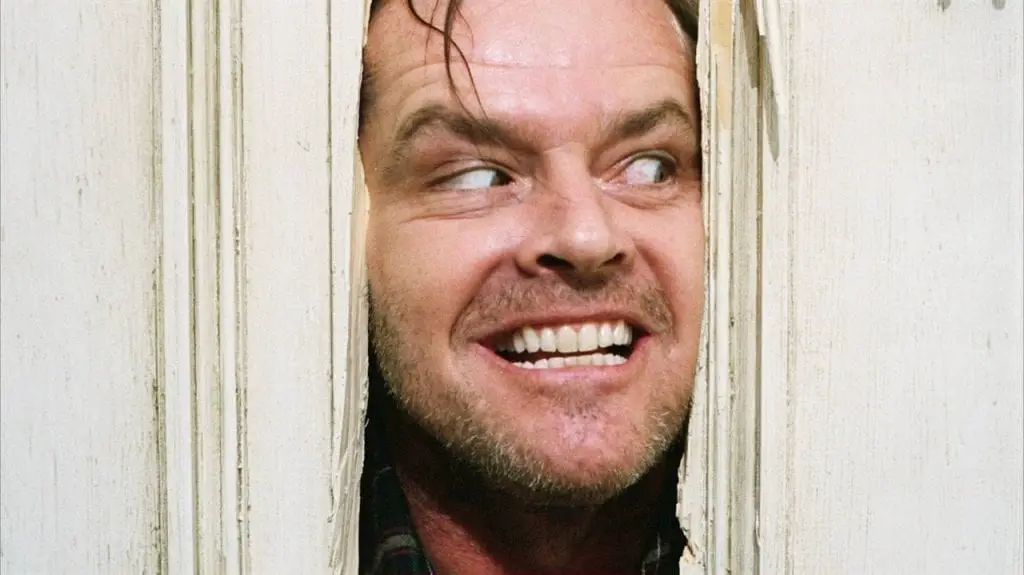
Jack Terrance is an alcoholic writer who becomes the caretaker of a hotel that’s littered with bad omens. There are creepy twins hanging out, elevators erupt with blood, and his son mutters “redrum” on repeat. When Jack Terrance loses his mind, we get to the famed line “Here’s Johnny!”.
The Shining is a classic example of the psychological elements in horror movies. His mental state deteriorates throughout the movie – we can’t trust his point of view. The hotel is cut off from the world, which echoes his mind’s isolation. The use of supernatural voices heightens the hotel’s malevolent nature.
The Shining always makes me feel uneasy. I find the ambiguity and the open interpretation fascinating. Even if director Stanley Kubrick explicitly explained the ending post-release.
Rating – 9.5/10
Rosemary’s Baby (1968)

Rosemary moves into an apartment building with a colorful satanic history as concerns about her pregnancy and the mysterious neighbors mount. In a perfect painting of parenting done wrong, we know where the film is heading, but it’s a true horror watching Rosemary’s mind deteriorate.
This film has become the most chilling and thought-provoking feminist horror classic. Gaslighting features heavily in this movie, as Rosemary’s suspicions are often cast aside. As the audience, we feel like we’re inside her crumbling mind.
Rosemary’s Baby isn’t one of my favorites, but I can appreciate cinematic mastery when I see it. In particular, the gliding camera creates a disorienting and dreamlike atmosphere that adds to the psychological impact of the film.
Rating – 7/10
The Exorcist (1973)
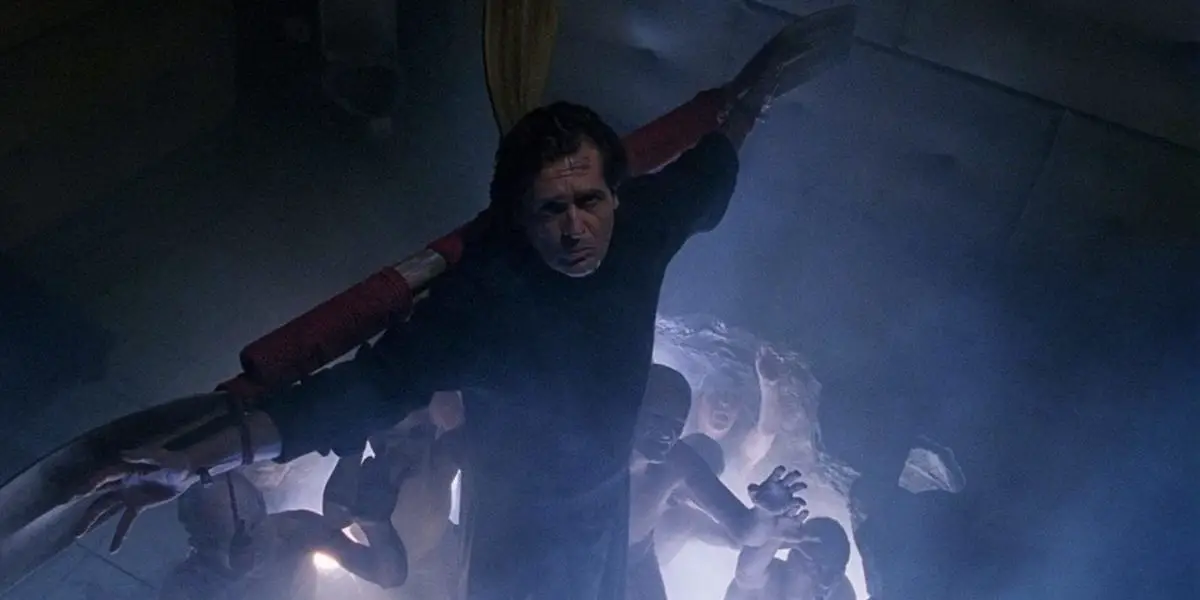
Chris McNiel and 12-year-old daughter Regan head to Washington, D.C. to make a film. The relationship between this mother and daughter is solid, but that all changes when Regan begins acting out of the ordinary. She goes through the onslaught of mental testing, but there’s simply no explanation.
Desperate, Chris turns to psychotherapist and Catholic priest, Father Karras, to request an exorcism. This brings Father Merrin to the family home. It’s said he’s already danced with the devil.
I’m always impressed by the makeup and special effects in this film, especially as Regan’s body contorts and levitates. The imagery of Good vs Evil is expertly integrated throughout this film – a testament to William Friedkin’s skill.
Rating – 8/10
The Silence of the Lambs (1991)

The Silence of the Lambs is a haunting journey into the farthest reaches of human evil and the resilience of the human spirit. The film follows FBI trainee Clarice Starling as she hunts a serial killer. To get into the mind of her target, she teams up with imprisoned cannibalistic psychiatrist Hannibal Lecter.
Jonathan Demme uses low light, eerie soundtracks, and the most unpredictable plot twists to create a persistent sense of anticipation. Hannibal Lecter is not to be trusted, and we’re left guessing what his true motives are.
Hannibal Lecter is one of my favorite horror villains because his mind is brilliant. Watching him psychoanalyze Clarice and force her into hearing his cannibalistic reflections is chilling. We never know what he’s going to say next.
Rating – 8/10
Halloween (1978)

Halloween is a genre-straddling masterpiece that’s become one of the most popular and influential horror franchises in the world. Detained in a mental institute for killing his sister as a child, Michael Myers escapes fifteen years later and returns to his hometown.
I have a lot of appreciation for John Carpenter. He created one of the most successful horror franchises and he composed the score as well, which only adds to the immense atmosphere in Halloween. Giving Michael Myers a mask and zero lines was a stroke of genius that makes his presence terrifying.
Rating – 9/10
Don’t Look Now (1973)

John Baxter and his wife Laura travel to a wintery Venice, Italy to help cope with the sudden death of their daughter. While bodies drop through the streets of Venice, John uses work as a vice and Laura turns to drugs. Then a chilling encounter with a blind clairvoyant, Heather, and her outlandish sister, Wendy, sparks terrifying images of their daughter. Meanwhile, a figure in a red coat terrorizes the quiet village.
I like how Nicholas Roeg used recurring motifs of red and water to symbolize the couple’s grief, the supernatural, and their broken reality. The non-linear narrative style adds to the couple’s unreliable point of view and leaves us deep in thought.
Rating – 7/10
The Texas Chainsaw Massacre (1974)

Tobe Hooper’s The Texas Chainsaw Massacre sits on the same level of notoriety as Halloween, with the introduction of Leatherface. A group of friends go on a road trip through the backwoods of Texas. They come across a run-down gas station and are lured onto the Sawyer family’s farm. Inside, a cannibalistic nightmare awaits.
When I hear the roar of Leatherface’s chainsaw, my hair becomes static because I know what’s in store for his victims. The film does a good job of creating a sense of immediacy and realism through handheld camera work. I will always come back to The Texas Chainsaw Massacre, and I highly recommend it to anyone who hasn’t experienced it.
Rating – 9/10
Carrie (1976)

Stephen King is the undisputed King of Horror, a statement that director Brian De Palma clearly believed when he released Carrie in 1976. Carrie White is a misfit who unlocks telekinetic powers. Repressed by her overbearing mother and tormented by her entire school, her efforts to fit in lead to an infamous bloodbath at her senior prom.
I really enjoy Carrie because it plays on that feeling of loneliness that everyone has been through at some point. Whether you’ve been picked last for gym class or didn’t get invited out, everyone has experienced some of the feelings held by Carrie. This is why it’s become a cult classic and has been remade countless times.
Rating – 7/10
Alien (1979)

Ridley Scott’s Alien franchise deserves a place on every list of best horror movies. Sigourney Weaver’s Ripley steals the spotlight as she faces off against the terrifying Xenomorphs. In a tense movie ending with a bang, there are plenty of reasons to watch it.
I’m always drawn to sci-fi horror movies. The space setting alone fills me with anxiety. The ship has claustrophobic hallways to reflect the vulnerability of the crew. The pace of the movie is slow, which allows us to experience doom alongside the crew.
Rating – 8/10
Black Swan (2010)

Focusing on a production of Tchaikovsky’s Swan Lake, Natalie Portman plays Nina Sayers, a ballerina perfect for the innocent and fragile White Swan. Then newcomer Lily (Mila Kunis) arrives to compete for the space. With the mounting pressure, Nina’s grip on reality slowly descends into madness.
This film took me by surprise. Black Swan deals with ambition, perfectionism, duality, and the dark nature of the human mind excellently. Portman put on one of the best performances of her career. She lost weight for the movie and spent months training in ballet. Her commitment to the film is shown through her portrayal of Nina’s dissociative identity disorder.
Rating: 6/10
The Babadook (2014)

Horror fans enjoy The Babadook because of its unique exploration of maternal anxiety, trauma, and the power of fear. The film follows a widowed single mother, Amelia, as she struggles to raise her troubled son. His behaviors become terrifying as he becomes obsessed with a children’s book, ‘Mister Babadook’.
I love the concept of unknown entities entering our world from the pages of a book. The Babadook is a clear representation of Amelia’s unresolved grief and trauma, which leaves her in a dark place. Samuel’s actions symbolize his mother’s fear for his well-being.
Rating – 5/10
The Sixth Sense (1999)

Night Shyamalan is renowned for his unique brand of plot-twisting horror. The story follows Dr Malcom (Bruce Willis), a child psychologist grappling with the guilt of professional failures. He takes on the case of Cole Sear, a troubled boy who claims “I see dead people”.
I see dead people
I love how Shyamalan weaved together Malcolm and Cole’s stories, allowing us to understand the complex fears and motivations. The iconic twist at the end of the film is also masterful because it flips the entire narrative, leaving us to contemplate the film long after it’s finished.
Rating – 8/10
A Nightmare on Elm Street (1984)
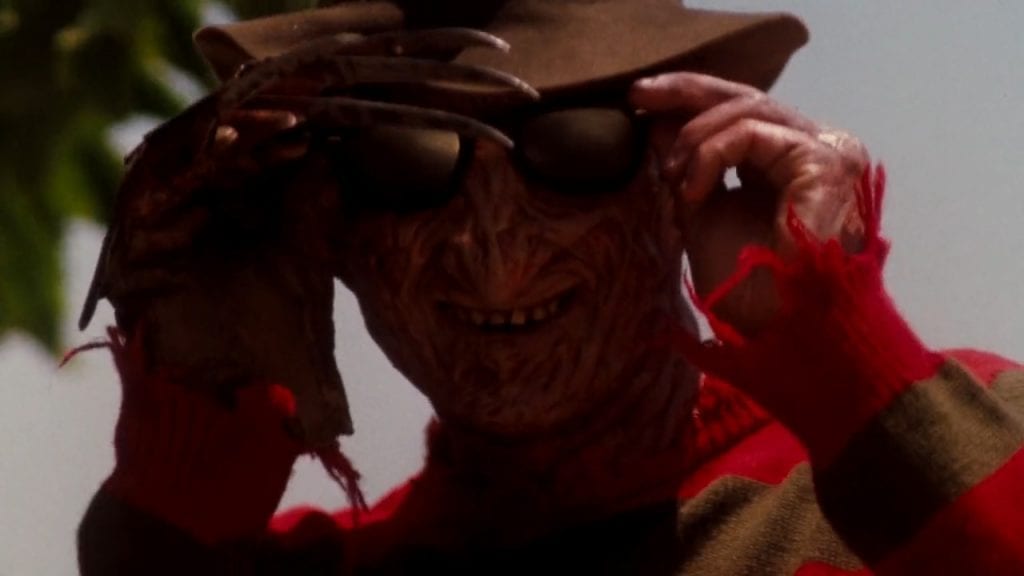
Wes Craven’s Nightmare on Elm Street sent shockwaves through the horror fanbase as it helped redefine the slasher subgenre. Almost 40 years on the mutilated Freddy Krueger is still one of the most iconic villains. Set in the peaceful town of Elm Street, Freddy Krueger wreaks havoc inside the minds of a group of teenagers.
Craven understood the assignment when he created this psychological horror film. Every person on the planet has nightmares, so each member of the audience can relate to the experiences. Just imagine being murdered in a nightmare and never waking up.
Rating: 7/10
The Blair Witch Project (1999)
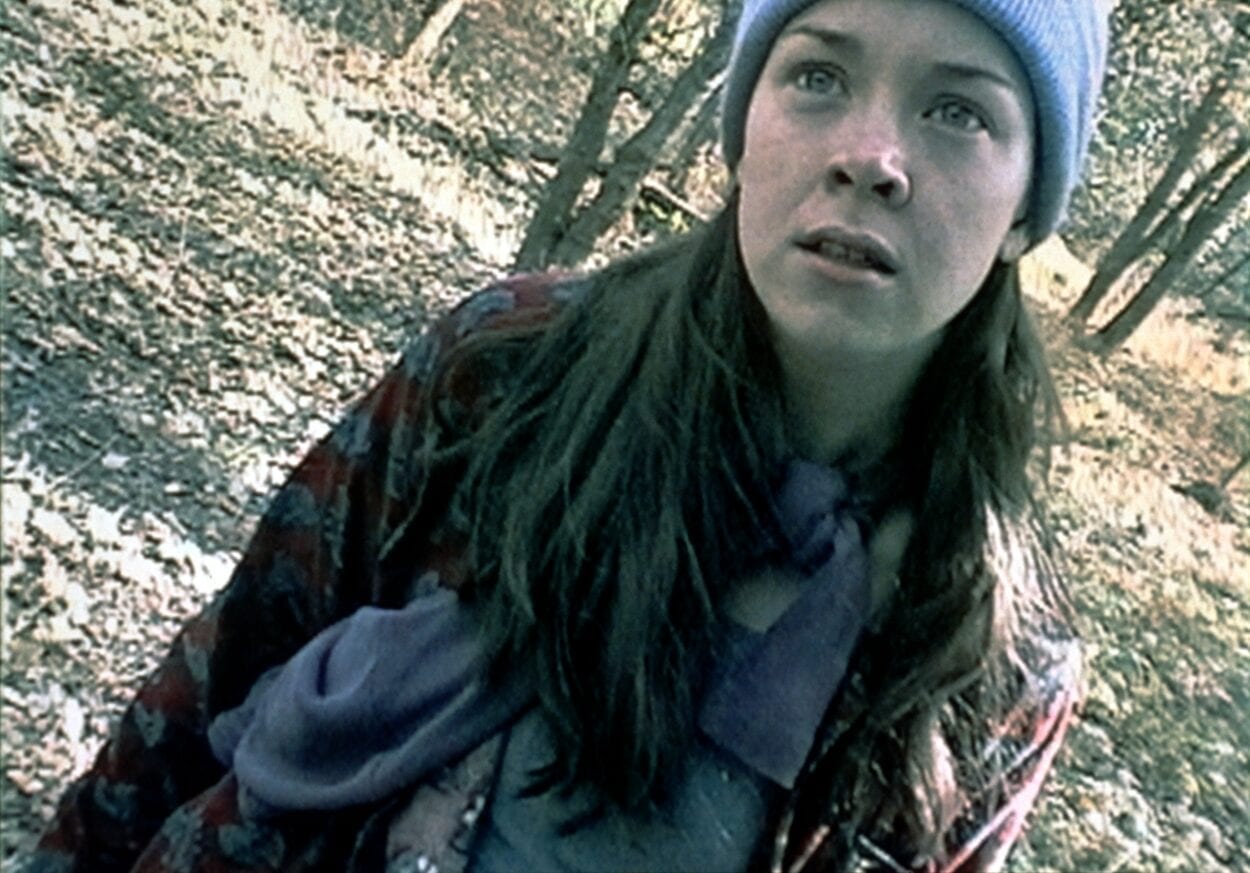
The Blair Witch Project (1999) ignited a horror community-wide love for found footage movies. Filmed from the perspective of a handheld camera, the story follows three filmmakers who set out to make a documentary about the Blair Witch urban legend (a local urban legend of Burkittsville, Maryland). However, everything goes wrong when they get lost in the woods and disappear, leaving only their footage behind.
I love The Blair Witch Project’s slow-burn narrative because I get to connect with the spooky adventure. The shaky camerawork makes you feel as though you’re there for the unsettling moments experienced by the students. I highly recommend you watch this psychological horror film.
Rating – 7/10
Get Out (2017)

Jordan Peele has cemented himself as one of the best modern horror movie directors, and it all started with Get Out. The film explores privilege, class, and race through a chilling narrative. Set in the suburb of Armitage, the film follows Chris Washington, an African-American photographer who visits the family of his white girlfriend.
I like Get Out because it addresses the very real issue of racism. We all know what will likely happen to Chris as he arrives at his girlfriend’s house, but this just adds to the suspenseful narrative. We are waiting for everything to go wrong, but we root for Chris to “Get Out”.
Rating – 6/10
It Follows (2014)
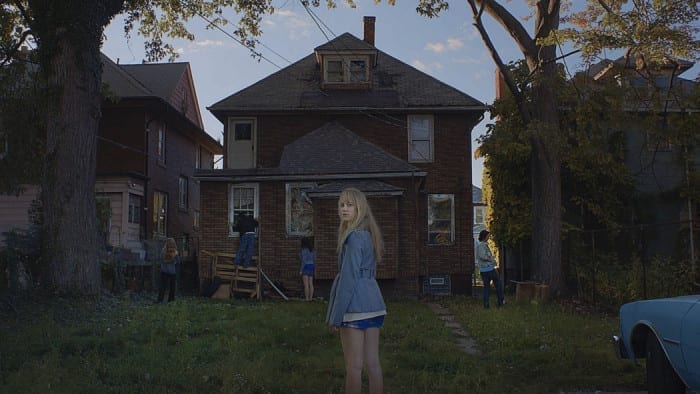
David Robert Mitchell’s It Follows is an unforgettable and chilling exploration of the supernatural, the fear of intimacy, and the inescapable nature of sexual transmission. Jay Height is a young woman who, after a casual encounter with a new acquaintance, finds herself cursed with a malevolent supernatural entity hell-bent on killing her.
I liked the concept of this film, a curse spread through sexual interaction. The film is a clear analogy for promiscuity and the dangers of unprotected sex. The violent entity out to kill Jay is never seen completely because it takes the shape of other people, which adds to the overall fear of the movie.
Reviews for this movie are very mixed, but I highly recommend giving it a go on your next fright night.
Rating – 6/10
The Witch (2015)

The Witch is Robert Eggers’ debut psychological horror feature, exploring family dynamics, Puritan faith, and the allure of darkness. Set in 1630s New England, we uncover the story of a Puritan family discarded from their community for religious dissent. As they struggle to live in the wilderness, they face a growing number of sinister events.
Eggers’ ability to transport me into an authentic 1630s had me invested from the start of this movie. The slow-burning narrative gradually reveals the family’s growing unease, which is what filled me with psychological dread.
Rating – 7/10
The Ring (2002)
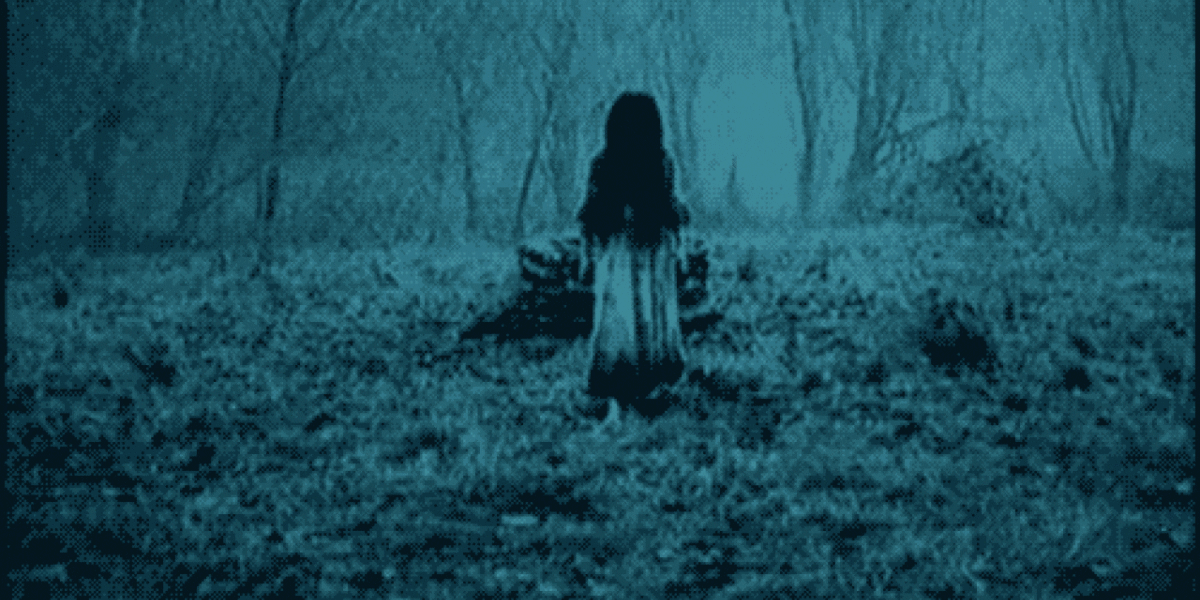
Gore Verbinski’s The Ring introduces us to Samara Morgan, one of horror’s most notorious villains. Journalist Rachel Keller investigates the mysterious circumstances surrounding her niece’s death. She discovers a cursed videotape that kills viewers within seven days of watching.
I think Samara Morgan is a fantastic villain. The vengeful spirit anchored to the videotape adds a chill to the air. The 7-day countdown within the film helped put me in Rachel’s shoes, and it contributed to the sense of urgency and dread.
Rating – 7/10
The Others (2001)

The Others (2001), by director Alejandro Amenábar, is a chilling exploration of grief and the fragile state of reality. Set immediately after World War II, we unlock devout Catholic, Grace Stewart’s, story. Living with her two photosensitive children, their lives are changed forever after the arrival of a group of mysterious servants who know too much about their house and its history.
I liked the ambiguity of this film because we never know what’s happening. Grace’s mental state deteriorates, so her perspective can’t be trusted. As well as this, the photosensitivity of the children means they live in near-total darkness, which emphasizes the dread.
Rating – 7/10
Audition (1999)
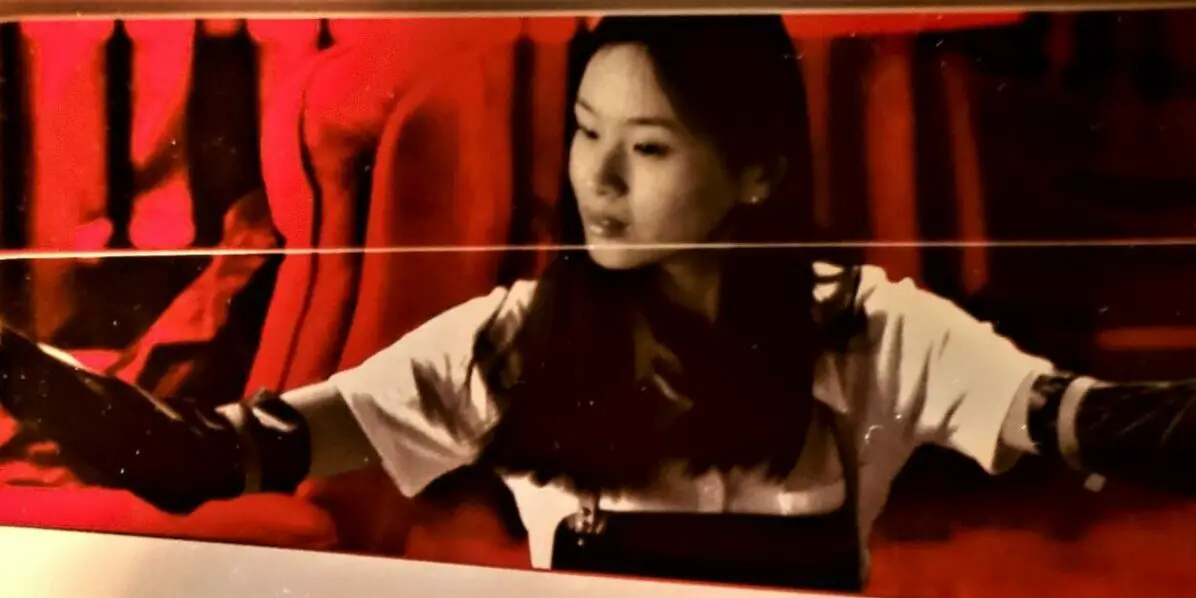
Audition is one of the best psychological horror films to come out of Japan. Director Takashi Miike’s adaption of Ryu Murkami’s novel is a harrowing take on the vulnerability of grief. The film introduces us to widowed film producer Shigeharu Aoyama, who gets pressured into hosting a fake audition for a non-existent role in the hopes of finding a new wife. The mysterious Asami Yamazaki seems to be the perfect fit, but not all is as it seems.
This film hit me hard. The growing tension between Shigeharu and Asami felt like a pot of boiling water about to burst, and it did. The end of the film takes a dark turn when Asami experiences the full force of Shigeharu’s repressed sadist tendencies.
Rating – 6/10
Donnie Darko (2001)

Jake Gyllenhaal puts on an excellent performance in Donnie Darko, which has become a cult classic. Richard Kelly forces the viewer to think about reality in this exploration of teenage angst and time travel. Donnie Darker is told by a haunting figure in a rabbit costume that the world will end in 28 days, six hours, 42 minutes, and 12 seconds. What will Donnie have to sacrifice to save the world?
I enjoyed letting the credits roll and trying to figure out what happened. Donnie Darko is a complex film focusing on the time travel paradox, which makes us question free will. When you combine this with non-linear storytelling, it’s no wonder it still has a strong following.
Rating – 8/10
Suspiria (1977)

Suspiria follows Suzy (Jessica Harper) as she travels to Germany to attend ballet school. She arrives late at night with nobody to let her in, and that’s when she sees Pat (Eva Axén) fleeing for her apartment – where she is murdered. The rest of the film takes us on a journey to uncover the school’s terrifying secrets.
Director Dario Argento impressed me with his use of color. The surreal and vibrant palette and use of lighting helped me feel like I was in a dreamlike world. There’s also a commendable horror score throughout, which was written by Goblin.
Rating – 5/10
The Wicker Man (1973)

The Wicker Man is celebrated for its exploration of extremist paganism, haunting atmosphere, and enigmatic narrative. Set on a remote Scottish island, we experience Sergeant Howie’s investigation into the disappearance of a young girl and the discovery of sinister pagan inhabitants.
Watching The Wicker Man was a breath of fresh air for me. The film’s folk horror atmosphere and handling of corruption in religion were excellent. The legacy of The Wicker Man has stayed with modern audiences, with Alton Towers theme park (UK) theming their latest rollercoaster on the movie.
Rating – 7/10
Repulsion (1965)

Repulsion explores Carol’s struggles with androphobia (a pathological fear of interaction with men). When she’s left alone in her London flat, Carol’s mental state deteriorates as she steps closer to madness.
I was drawn into this film because it was director Roman Polanski’s first English-language film, but I stayed for the captivating story. Carol’s experiences in the film are a representation of breaking the bounds of the traditional woman, which was revolutionary at the time. This film sparked an interest in other filmmakers to begin exploring female sexuality.
Rating – 5/10
The Descent (2005)

The Descent takes you on a claustrophobic adventure into a subterranean world you’ll never forget. A group of female explorers embark on an extreme caving expedition deep in the Appalachian Mountains, only to find themselves pursued by a race of cave-dwelling creatures.
The monstrous being from The Descent still scares me to this day. The restrictive underground environment added to the psychological torment of this film. The women’s relationships are tested in the face of exchange danger. I recommend watching this film to find out if anyone made it out alive.
Rating – 7/10
The Cabinet of Dr. Caligari (1920)

The Cabinet of Dr. Caligari is considered the first great work in the horror genre. The silent film tells the tale of an insane hypnotist, Dr. Caligari, who uses somnambulist, Cesare, to carry out heinous acts of murder.
Going back to the roots is always nice. The exaggerated acting and the expressionist style are what set this film apart. Not only is the thought of being controlled in our sleep terrifying for almost everyone, but the reliance on body language means anyone can understand the narrative.
Rating – 9/10
Let the Right One In (2008)

Swedish director Tomas Alfredson’s, Let the Right One In, is a supernatural tale of friendship, love, and blurred reality. Taking place during a harsh winter in the suburb of Blackeberg, Sweden, the film focuses on a lonely and isolated boy called Oskar. He forms an unlikely friendship with the mysterious pale girl, Eli, from the apartment above.
I have a soft spot for vampire movies, and you know that’s where this film is going just from the title. Watching the romance between Oskar and Eli blossom was heartwarming, which is an odd sensation for a psychological horror. Don’t worry, you will see the fangs in action when Eli takes out Oskar’s bullies.
Rating – 8/10
The Orphanage (2007)

The Orphanage is a stunning yet creepy film in a haunted house setting. Instead of relying on blood and gore, director J.A. Bayona terrifies the audience through slow-paced narration. Laura returns to the orphanage where she grew up to establish a home for disabled children. However, when her son Simón disappears, Laura must uncover the horrifying secret within.
I’m a fan of films with the classic haunted house horror trope, especially when they’re executed like The Orphanage. The unreliable narration throughout the film reflects Laura’s crumbling mind, and her journey sees her unpack complex emotions including grief and the powerful love of a mother. When I got to the end of the film, my perspective was forced to shift after an incredible twist.
Rating – 7/10
Jacob’s Ladder (1990)

Jacob’s Ladder is a haunting exploration of emotional trauma, guilt, and delusion. Jacob Singer is stationed in Vietnam when his unit gets attacked. Some of the soldiers have seizures and others become catatonic. Jacob is stabbed attempting to evade. Four years later, Singer works as a postman when he has a near-death experience in a subway. This sparks bizarre hallucinations that he believes the government is behind.
Exploring themes of PTSD and conspiracy theories, I find Jacob’s Ladder to be at the height of psychological horror. My only issue with the narrative is that I didn’t need as much signposting – my imagination was able to figure it out.
Rating – 7/10
Martyrs (2008)

The French psychological horror movie, Martyrs, is a disturbing narrative about two women seeking revenge on the people who put them through harrowing child abuse.
I find revenge films offer an exhilarating experience, and Martyrs is no different. The blend of psychological torment and visceral horror is a great combination. I like that the women become the thing they’re trying to eradicate because it blurs the lines between good and evil.
Rating – 7/10
The Omen (1976)
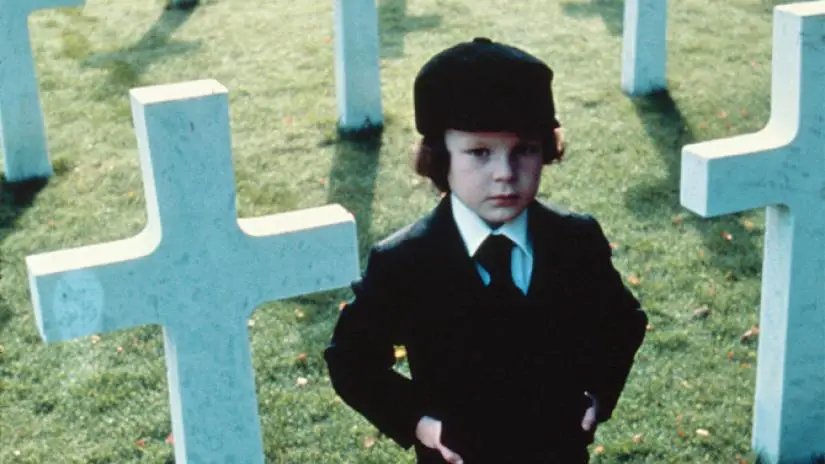
The Omen is a predator in the horror community. American diplomat Robert Thorn begins to fear his son is the antichrist. When the eerie events get worse, no thanks to creepy governess Mrs Baylock, Robert has to take extreme measures to save the world from breaking into a hellish nightmare.
Many people see The Omen as another film about demonic possession. This is true, but what I find fascinating about The Omen is that we never see any obvious demonic behavior – apart from the fits of rage outside a church. As the name suggests, the story is built around omens like the black dogs and other evil manifestations.
Rating – 9/10
It (2017)

The original two-part miniseries adaption of IT, by Stephen King (1990) became a huge hit, and it’s one of the best psychological horror films. In 2017, a remake of IT was released and it sent horror fans into a frenzy. If you aren’t familiar with IT, it’s a harrowing story about a group of outcast children and an evil shapeshifting killer named Pennywise – taking the form of a clown.
The 2017 remake of IT was an instant nostalgia buzz for me. I enjoyed the non-linear narration and growing ambiguity of the recollections. Bill Skarsgård’s performance of Pennywise was a high point. His whole demeanor was unsettling and it’s stuck in my memory.
Rating – 8/10
The Conjuring (2013)

The Conjuring Universe collection of films is turning into the Marvel of horror, and nobody is complaining. The Conjuring (2013) was the first movie in the franchise, based on real-life paranormal investigators Ed and Lorraine Warren, taking us on a chilling investigation into the haunting of the Perron family farmhouse.
I can’t get enough of The Conjuring movies. Being shot from the Perron family’s perspective, I was fully captivated by their story – even if it was unreliable. I was also enthralled by the terrifying portrayal of Bathsheba.
Rating – 8/10
A Tale of Two Sisters (2003)

South Korean psychological horror film, A Tale of Two Sisters, takes us into a twisted psychological story full of family secrets and repressed trauma. A secluded South Korean mansion is the backdrop. The film focuses on sisters Su-mi and Su-yeon, who have returned home after spending time in a mental institute. The arrival of their stepmother and the eeriness of the house disrupts the family dynamics.
I recommend everyone experience South Korean horror movies, especially A Tale of Two Sisters. The plot twist at the end is a stroke of genius. Discovering that Su-yeon suffers from dissociative identity disorder, and has been playing the part of her stepmother and sister for most of the film, caught me off guard.
Rating – 7/10
Ringu (1998)

Ringu (Ring) is a Japanese neo-horror film that explores technology horror, urban legend, and a true fear of the unknown. Based on Koji Suzuki’s novel of the same name, Ringu tells Asakawa Sadako’s story. A young woman finds a video tape that kills those who watch within seven days. Sound familiar?
American horror movie, The Ring (2002), is a remake of Ringu. I enjoyed Ringu, but I felt slightly removed from the emotion because I watched a subtitled version. However, this film still gave me chills because of the horrifying depiction of Sadako Yamamura.
Rating – 6/10
The Vanishing (1988)

The Vanishing is a Dutch psychological thriller based on Tim Krabbé’s novel, The Golden Egg. The story follows Rex Hofman, a young man whose girlfriend vanishes from a service station on the road to France. Will Rex find Sasika or will he lose in mind in the process?
I have a lot of praise for this film. The film only takes place in Rex’s immediate surroundings (car, service station, and apartment). This immersed me in the chaos of Rex’s mind and left me feeling claustrophobic.
Rating – 6/10
Funny Games (1997)

Austrian psychological horror film, Funny Games, deals with the sadistic nature of spectatorship violence and its impact on innocent victims. We experience the story of two young men who arrive at a lakeside holiday home, without an invitation. With a calm demeanor, they systematically torture the family.
I found Funny Games to be a disturbing watch. I was gripped the entire way through. All of the violence is offscreen, but we know what’s happening. Gruesome acts include a child being shot dead and a dog being beaten to death. Breaking the fourth wall was one of the best aspects because it turned us into a spectator.
Rating – 6/10
The Wailing (2016)

The Wailing takes place in a South Korean village nestled in the Gokseong mountains. We experience police officer Jong-gu’s story as he investigates mysterious illnesses and deaths. All signs point to the arrival of an eerie stranger, but is all what it seems?
I enjoy psychological horrors that feature a side of the investigation, which The Wailing blends brilliantly into a captivating narrative. If you’re looking for an atmospheric cinematic experience, Jong-gu’s descent into madness is a must.
Rating – 8/10
The Fly (1986)
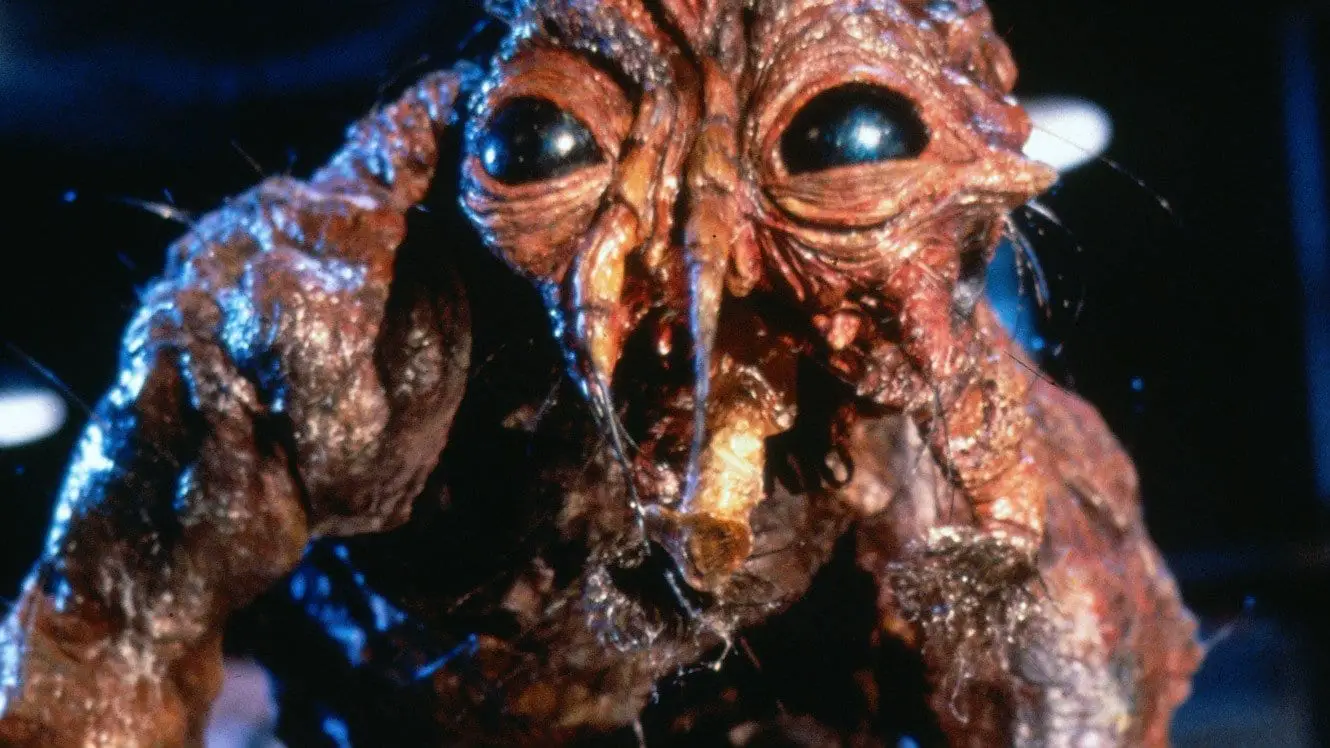
David Cronenberg takes us into the realm of physical transformation in The Fly. Jeff Goldblum plays eccentric scientist Seth Brundle, who develops a teleportation device that goes wrong. The result? He’s mutated by the DNA of a fly.
I’m a huge Jeff Goldblum fan, but The Fly is one of my favorites. The slow physical transformation into a fly is emotionally harrowing and visually grotesque, as he grapples with the loss of humanity. I love that we see his psychological state being reflected by his physical transformation.
Rating – 7/10
The Devil’s Backbone (2001)

Critically acclaimed horror director Guillermo del Toro released a psychological masterpiece with The Devil’s Backbone (El espinazo del diablo). Set in the final year of the Spanish Civil War, this film tells us the story of a young boy sent to a Republican-ran all-boy’s orphanage. He soon realizes the school is haunted by the spirits of those recently passed.
I recently watched del Toro’s Cabinet of Curiosities on Netflix, which got me in the mood to rewatch The Devil’s Backbone. This haunting slow burn story is packed with beautiful imagery and solid storytelling.
Rating – 8/10
The House of the Devil (2009)

The House of the Devil is a haunting story delving into the depths of motherhood and grief. Set in 1983, the story follows a college student in financial ruin. She starts babysitting on a full moon and realizes she’s in mortal danger.
This film made me think about trauma and grief, which are universal themes most can relate to. The storytelling is excellent and the ending will leave you deep in thought.
Rating – 6/10
May (2002)

Lucky McKee’s, May, tells the story of a young woman left traumatized by events in her childhood. May has deep-seated awkwardness that nothing will fix, even car mechanic Adam was driven away. Then her affections turn to Polly, who dumps her as well. In the end, emotional instability turns to violence.
I admire McKee’s ability to create a coming-of-age movie that turns the main character into a monster. Even though there are plenty of unsettling moments, May is likely relatable to many people.
Rating – 6/10
The Skin I Live In (2011)

Pedro Almodóvar’s, The Skin I Live In, is a disturbing venture into human cruelty, limitation, and the search for meaning in the face of suffering. An incredible but disturbed plastic surgeon creates damage-resistant synthetic skin. The test subject is a mysterious woman who will unlock his obsessions and past.
I think The Skin I Live In is one of Almodóvar’s better pieces of work. Moving away from the romance he’s known for, this step into the horror genre is respectable. If you like a movie with the stillness and chills felt in a good psychological movie, watch this.
Rating – 6/10
Kill List (2011)
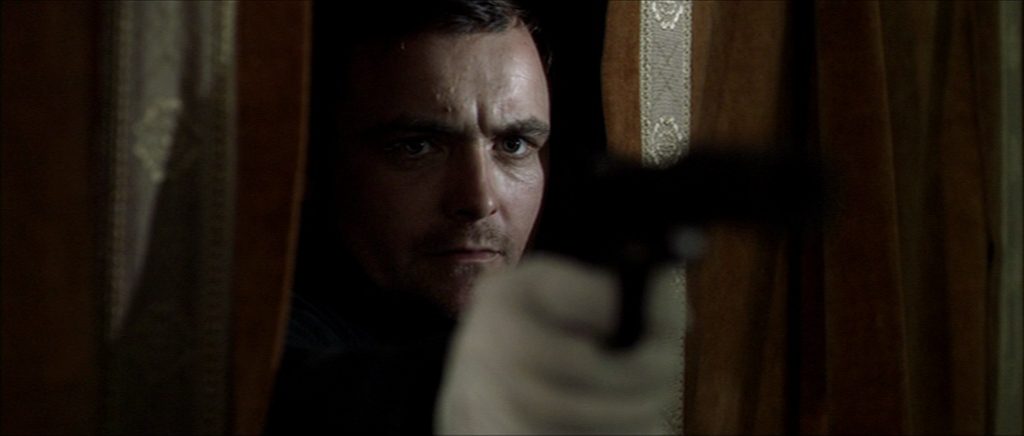
Kill List follows a former soldier turned hitman. However, things start to go wrong when paranoia and fear take over his life.
This film had me struggling to follow at first, but that’s because director Ben Wheatley does an excellent job with his unconventional narrative style. If you like your horror movies with a side of action, you’ll enjoy this film.
Rating – 6/10
Possession (1981)

Possession is all about the appeal of forbidden love, the disintegration of relationships, and the fall into madness. After asking her husband for a divorce, Anna becomes erratic in her efforts to get away. Mark becomes obsessed with finding out why Anna is leaving him. In the middle is their infant Bob, who’s used as a measure of Anna’s mental state. When a private investigator is hired by Mark, a harrowing secret comes to the surface.
I like the way marital breakdown was used as a cover for the complex issues packed into the film. The cultural commentary was also worked into the plot excellently, and performances by Sam Neil and Isabelle Adjani were stellar.
Rating – 5/10
Berberian Sound Studio (2012)

Peter Strickland’s Berberian Sound Studio is one of the more peculiar psychological horror films on this list. Set in the 1970s, hapless engineer Toby Jones takes up a job in Rome working on a giallo film. Throughout the film, he gets drawn into the mystique of the movie and loses his mind.
I thought this movie was technically excellent, especially the use of sound. The idea of becoming overly immersed in work was relatable, as I imagine it is for many. The only issue I had was that it lent too far into ambiguity.
Rating – 4/10
Pulse (2001)

Pulse is a Japanese horror film dealing with the rapid pace of technological evolution and a ghostly invasion. This is a unique film that follows two groups that collide. They come across evidence of a ghostly invasion coming from the internet. What started as a small internet issue will have unsettling consequences.
I enjoy this film’s ability to discuss the existential dread felt in early 2000. This was during a time of rapid tech evolution, which led to titles like Ringu, The Grudge, and Dark Water. Every human in this film is just trying to do the right thing, which sets it apart from other movies.
Rating – 6/10
The Tenant (1976)

A deluded man rents an apartment after the previous owner tried to kill herself. As the story unfolds, we learn that the entire building wants him dead.
As a horror enthusiast, I had a great time watching The Tenant. The eerie elements were subtle enough to make me think about what was happening. If you don’t mind undertones of horror relying on thought, give this a watch.
Rating – 5/10
Elements of Psychological Horror
Psychological horror films rely on humanity’s deepest fears, unreliable narration, suspense, and ambiguity to create a sense of dread. Common themes include paranoia, grief, isolation, and the fragility of the human mind.
Setting, mood, and atmosphere play a large part in psychological horror films. For example, a movie exploring isolation may use tight hallways. Color is often used to foreshadow upcoming events, like the red used in Don’t Look Now.
How Does Psychological Horror Work?
Psychological horror films manipulate human emotions to leave us questioning the plot and our existence. Character backstories are given a lot of attention so that we can connect with their despair or descent into madness, but this makes for an unreliable version of events. Some of the best psychological horror movies have shocking plot twists that alter the entire narrative.
Psychological Horror vs. Traditional Horror Films
Psychological horror and traditional horror films aim to evoke fear, but thematic exploration, approach to storytelling, and intended audience are different.
Traditional horror movies use overt jump scares, gore, and violence to prompt a visceral response. They often include a serial killer or monsters, and overt natural forces. In contrast, psychological horror movies exploit the human psyche by exploring madness, grief isolation, and paranoia.
Traditional horror films are approached with the expectation of being scared. There’s no need to think about the plot, it’s just storytelling for thrills.
Psychological horror provides an unsettling experience that lingers after the credits. The audience questions the reliability of the protagonist and the nature of the threats.
Difference Between Psychological Thriller and Psychological Horror
Psychological thrillers focus on mystery, suspense, and narrative twists to keep the audience guessing until the end. Themes often include manipulation, deception, and the dark side of human nature. Psychological horror explores the human psyche, often dealing with paranoia, madness, and the instability of the human mind.
Both thriller and psychological horrors use unreliable narratives to make the audience question reality. They also hold back information to create a sense of foreboding.
Despite overlaps, each subgenre exhibits unique characteristics:
- Psychological thriller. Focuses on internal struggles. Explores manipulation and deception. The story is driven by twists, turns, and suspense.
- Psychological horror. Leaves a lingering discomfort and unease. Explores paranoia and madness. Uses ambiguity and suspense to leave audiences questioning the narrative.
Frequently Asked Questions
How does psychological horror differ from regular horror movies?
Psychological horror and regular horror movies target fear and unease, but their approach differs significantly. Storytelling, thematic exploration, and intended audiences are different.
Are there any psychological horror movies without jump scares?
Most psychological horror movies avoid traditional jump scares. Here are some of my top picks:
- The Shining (1980)
- Rosemary’s Baby (1968)
- The House of the Devil (2009)
How do psychological horror movies affect the audience psychologically?
Psychological horror movies leave audiences feeling disturbed, unsettled, and even traumatized. These effects can be immediate and long-lasting.
What are the common elements found in psychological horror films?
Common elements found in psychological horror films include:
- Suspense and ambiguity
- Symbolism and metaphor
- Unreliable narration
- Mental exploration
- Lingering impact
What is the scariest psychological horror movie ever made?
Fear is subjective, so there’s no definitive answer to this question, but here are a few contenders:
- The Shining (1980)
- The Exorcist (1973)
- Doctor Sleep (2019)
How has the psychological horror genre evolved over the years?
Psychological horror has changed since it first took off, largely reflecting social anxieties and advances in cinematic technology. Here are some key changes:
- Influence of technology
- Contemporary fears
- Enhanced storytelling techniques
- Rising popularity
How does sound design contribute to the psychological horror experience?
Sound plays a crucial role in creating the unsettling tone and psychological tension. By carefully manipulating sound, filmmakers can elevate the audience’s fear, manipulate perception, and evoke subconscious responses.



